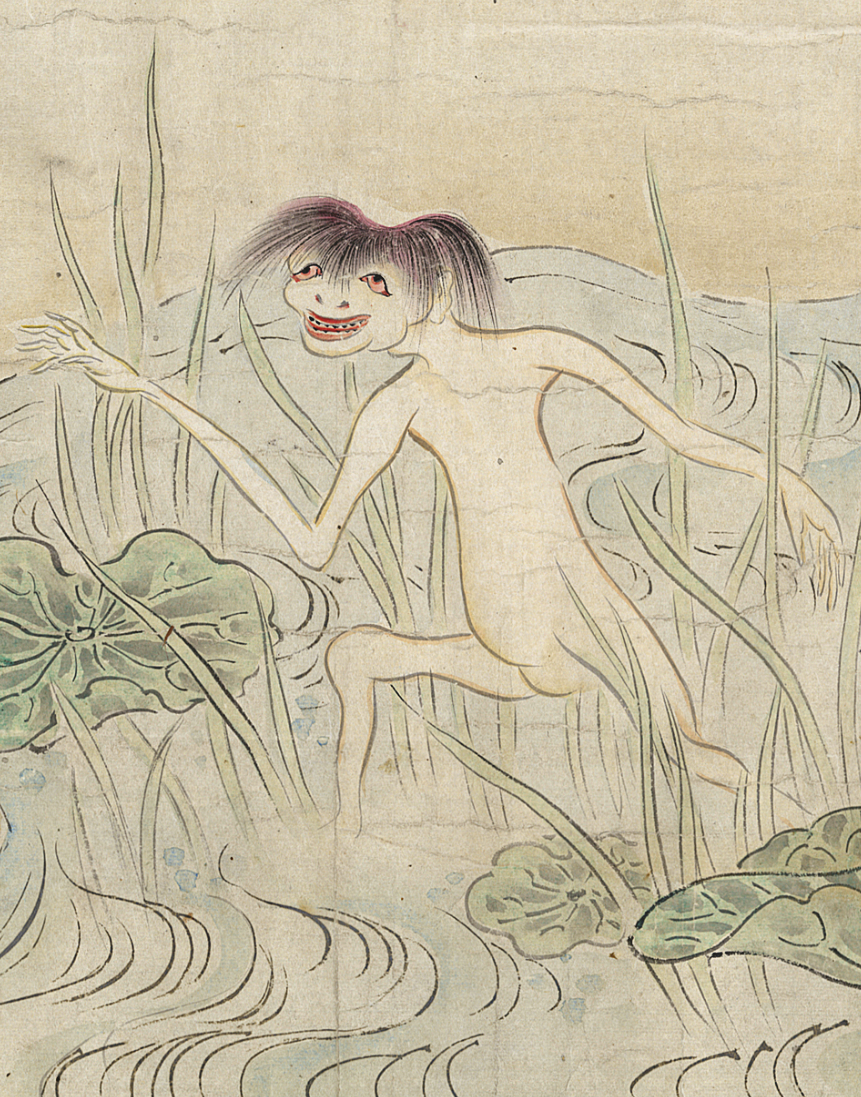In traditional Japanese folklore a kappa, “river-child”… is a reptiloid kami with similarities to yōkai. Kappa can become harmful when not respected as gods. Accounts typically depict them as green, human-like beings with webbed hands and feet and turtle-like carapaces on their backs. A depression on the head, called a “dish”, retains water, and if this is damaged or its liquid is lost (either through spilling or drying up), a kappa becomes severely weakened. The kappa favor cucumbers and love to engage in sumo-wrestling. They are often accused of assaulting humans in water and removing a mythical organ called the shirikodama from their victim’s anus.
| Alias Kappa (河童) |
| Real Names/Alt Names “River child”; Alt: Kawatarō (川太郎, “river-boy”), Komahiki (駒引, “horse-puller”) |
| Characteristics Amphibian, Reptile, Yōkai, Scientific Revolution, Japanese |
| Creators/Key Contributors ○ |
| First Appearance Japanese folklore |
| First Publisher ○ |
| Appearance List Bakemono no e (化物之繪, “Illustrations of Supernatural Creatures”, Edo Period), Gazu Hyakki Yagyō (画図百鬼夜行, “The Illustrated Night Parade of a Hundred Demons” or The Illustrated Demon Horde’s Night Parade, 1776) Vol. 1 “Yin” |
| Sample Read Bakemono no e (Edo Period) [Internet Archive] |
| Description In traditional Japanese folklore a kappa, “river-child”… is a reptiloid kami with similarities to yōkai. Kappa can become harmful when not respected as gods. Accounts typically depict them as green, human-like beings with webbed hands and feet and turtle-like carapaces on their backs. A depression on the head, called a “dish”, retains water, and if this is damaged or its liquid is lost (either through spilling or drying up), a kappa becomes severely weakened. The kappa favor cucumbers and love to engage in sumo-wrestling. They are often accused of assaulting humans in water and removing a mythical organ called the shirikodama from their victim’s anus. |
| Source Kappa (folklore) – Wikipedia |

